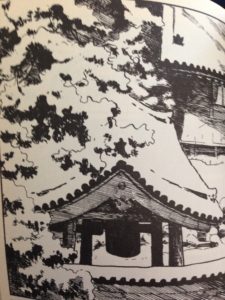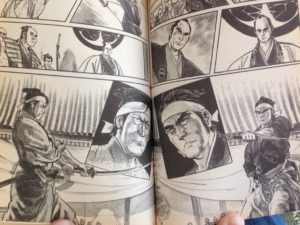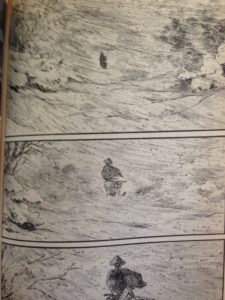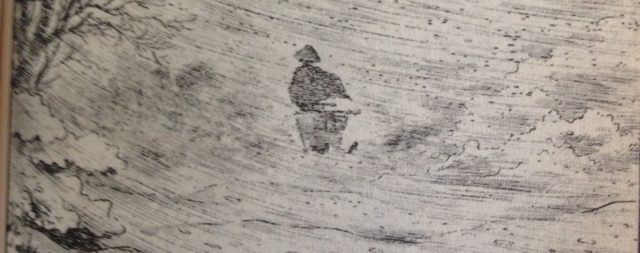On the run from the authorities of Feudal Japan, Lone Wolf and Cub is the tale of the two surviving members of the Ōgami clan as they seek revenge against their rivals, the Yagyū. The path ahead is long and full of hardships as this wrongfully disgraced Samurai and his son walk the Assassin’s Road, fighting bounty hunters, corrupt officials, and Yakuza gangsters along the way. At its heart, it is the story of a parent and a child making difficult decisions and doing the best they can with what life has thrown their way.

All while traveling through a feudal Japan that is beautifully scenic
To earn the money they need to survive along the road, Ōgami Ittō works as a freelance assassin – or so it seems! The jobs which they undertake are often tangentially related to his goal of overthrowing the Yagyū and avenging the death of his wife and dissolution of his clan. When those jobs are not connected, they are usually trying to help those less fortunate or rectify an injustice. The pair are not merely a projection of modern ideals upon a feudal society, however. Often times their actions, while fitting perfectly within the ideals of the time and place in which Ōgami Ittō and Daigoro live, seem terribly cruel by our standards.
For example, take “Thread of Tears” from Volume 8 of Dark Horse’s first collected editions. Ōgami and Daigoro take refuge in a monastery, where a widow is also staying. She identifies him as the executioner-turned-assassin who killed her husband and challenges him to a duel. As they fight, he gains the upper hand. If this were a western story, this would probably be the moment when the hero spares the woman and tells her to move on with her life. Instead, Ōgami kills her.

While there are some long-lasting duels in the series, most of them are actually rather short, lasting only one or two strokes. This is in keeping with the dueling style of the time, which generally ended very quickly, hence the dramatic focus stays on the story itself rather than the action, paying particular attention to the “warrior spirit” of the combatants.
While this may sound monstrous (and indeed, even recounting it gives me a feeling of disappointment), the protagonist’s actions make perfect sense in light of the prevailing beliefs of the time. The last words the widow utters as she is dispatched are, “My love! At last I join you! At last…” The prevailing wisdom of the day taught that she would join her husband in the afterlife, and the creators’ dedication to this level of historical authenticity gives the entire series a cognitive unity which helps the reader to forgo judgement in such cases and simply accept that time period (and, by extension, its people) for what it was.
The casual comic book reader might be disappointed that Lone Wolf and Cub is black-and-white. However, the artist Gōseki Kojima was no simple outliner. Every brush stroke, every cross hatch, every splatter of ink provides the effortless feel which assures the reader that they are in the hands of a master craftsman.

Check out this establishing shot. Did someone call for a mysterious anti-hero?
While its creators cleaved to a certain degree of historical accuracy, the stories themselves are not immune from flights of fancy. One such flight, a literal flight in this case, is “Son For Hire, Sword For Hire” from Volume 1 in which an airborne attack by a hawk temporarily blinds its victim. These occasional departures from the usual immersive backdrop of feudal Japan are still effective, however, and give credence to the superstitions of the time, providing more than enough narrative depth to make up for any loss of realism.
Lone Wolf and Cub is a story of a man struggling to fulfill his obligation to his family and the code of Bushidō at the same time. It is a story which deserves a place in any library for its unapologetically visceral portrayal of the casual violence of Edo Japan, its beautifully scenic backgrounds, and its tragic and wonderful characters whose journey on the Assassin’s Road is paralleled by their own Complex struggles with themselves and the world in which they live.
The 12-volume omnibus for this series can be found on Amazon and Barnes & Noble.

